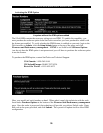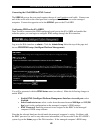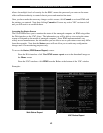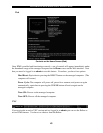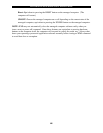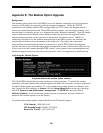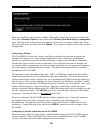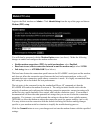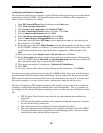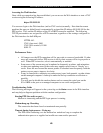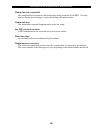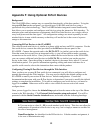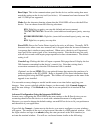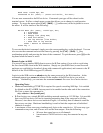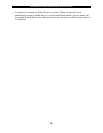
SVx41HDI Series Server Remote Control: Instruction Guide
53
Baud rate: 115200 bps, 8N1
Connected to #1: (none)... (Press Ctrl-Shift-_ for menu).
You are now connected to the R-Port device. Commands you type will be echoed on the
terminal screen. It offers a simple menu system that allows you to change its configuration
settings. To access the menu press [Ctrl] - [Shift] – [_] (underscore) on the keyboard to access
the menu. It will be similar to the following:
RS-232 Menu (#1: (none), 115200 bps, 8N1)
Q – Disconnect
# - Send break
H – Hangup line (drop DCD)
E – Send Ctrl-Shift-_
L – Low log entries (line buffer)
1 – Show last 10 log entries
other – Return to connection
Press key ->
To execute the desired command, simply press the corresponding key on the keyboard. You can
also execute the command and avoid the menu by pressing the [Ctrl] – [Shift] – [_] key
combination quickly and pressing the letter of the command. To quit the menu, press [Q] on the
keyboard when the menu is active.
Remote Login via SSH
You can also use a standard SSH client to access the R-Port options if you wish to avoid using
the Java-based SSH client in the Web interface. Simply use your SSH client (several freeware
packages are available for download, along with commercial applications) and connect to the IP
address of the SVx41HDI using port 22 (default).
Login in to the SSH session as admin using the same password as the Web interface. At the
command prompt type connect x (where x is the number of the R-Port device you wish to
manage). Alternatively, you can enter the command connect -l to see a list of active devices.
Operating Notes
• Hardware handshaking (CTS/RTS) is required for speeds exceeding 9600 bps. It is enabled
by default on the SVx41HDI, but may need to be enabled on the other end of the connection.
For Unix systems, the command is:
stty –crtscts < /dev/[serial port]
• R-Port devices use a simple RS-485 multidrop network running at 115,200 bps. It is possible
that every R-Port device will not be inputting/outputting data at the same rate at all time.
However, since these devices use interactive logins, it is unlikely that all channels would be
busy at any one time. Hardware handshaking is used to limit the output rate of individual
channels as needed.
• A maximum of four users may simultaneously login to the same device. All users may type
commands at any time, and all users will see the same output. Note the following:
• All users have equal access to all channels.
• A maximum of 16 R-Port devices may be connected at any one
time.



